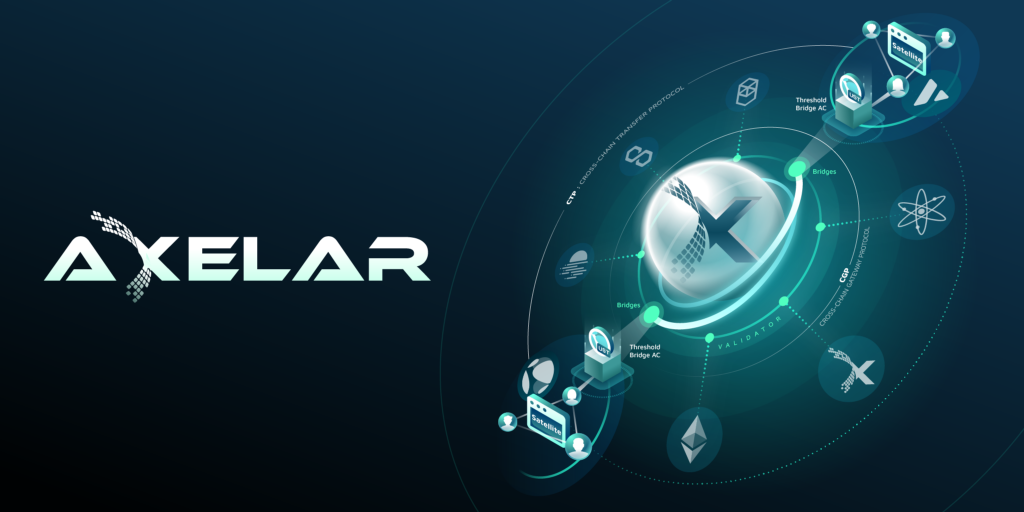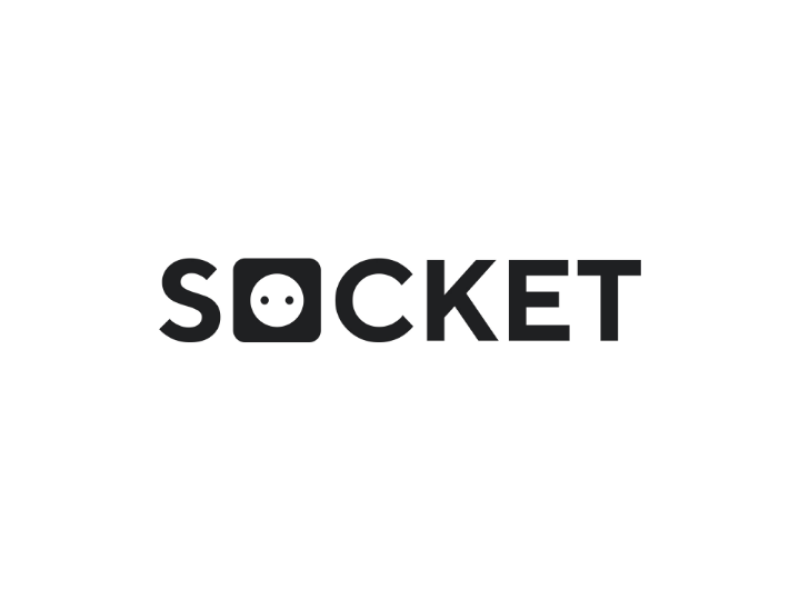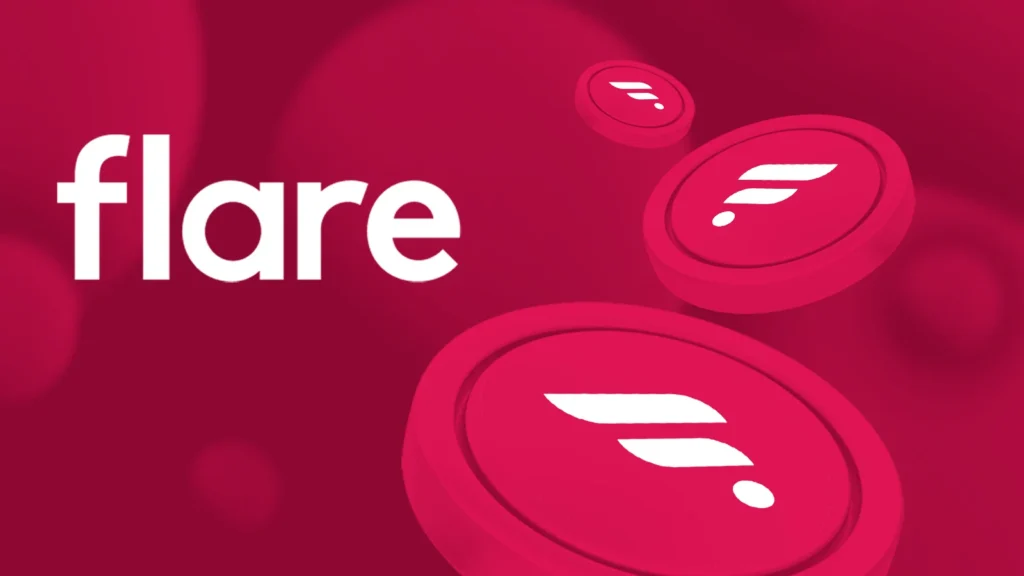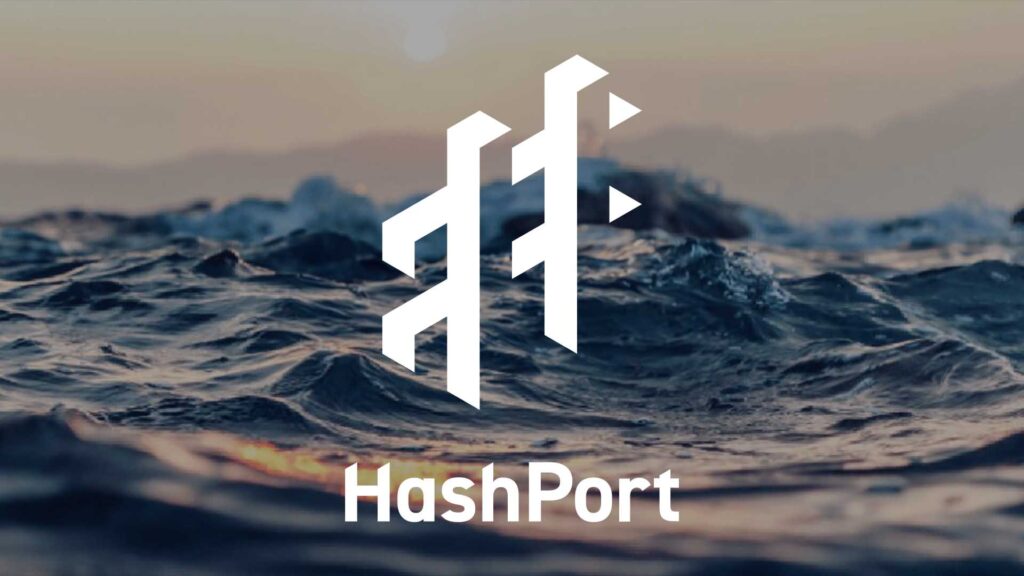Dapps have played an important role in redefining Crypto and blockchain technology, and they are now a vital tool in the emerging Web3 ecosystem. Join us as we delve into interoperability and cross-chain solutions for web3 dapps.

If you spend enough time exploring the crypto and blockchain world, it won’t be long before you wonder what a dApp is and what it stands for.
While Web3 is not primarily based on blockchain technology and dApps, it has gained popularity quickly and become a very important business element.
dApps have played an important role in redefining Crypto and blockchain technology, and they are now a key tool in the emerging Web3 ecosystem.
For this reason, they can be exceedingly difficult to ignore. However, their sheer importance might be intimidating for beginners, as many of the most revolutionary ideas in this domain are difficult to understand.
However, there is no better time to learn about a dApp than now since it will prepare you for future internet innovations in the coming months and years.
This is because dApps are undoubtedly here to stay, with an increasing number of developers devoting their time to them.
Understanding Web3 Dapps
Decentralized applications, or dApps, are software programs that run on a blockchain or peer-to-peer (P2P) network of computers instead of on a single computer.
Rather than being governed by a single authority, dApps are distributed throughout the network and collectively controlled by their users.
They are frequently created on the Ethereum platform and designed for various applications, including wallets, exchanges, gambling, personal finance, and social networking.
A web app, such as Uber or X (previously Twitter), runs on a computer system owned and maintained by a corporation controlling the program and its functionality.
Regardless of the number of users, the corporation controls the backend. DApps operate a little differently. They operate on a peer-to-peer or blockchain network.
BitTorrent, Tor, and Popcorn Time are examples of software that run on computers connected to a peer-to-peer (P2P) network that allow multiple users to consume, feed, or seed content.
DApps are similar, except they operate on a blockchain network in a public, open-source, and decentralized context. They are not subject to control or interference by any single authority.
For example, a developer can design an X-like dApp and deploy it on a blockchain, allowing users to publish messages. Only the message originator can delete messages once they have been posted.
Fundamental Infrastructures of Web3 Dapps
Decentralized apps have a different architecture than web2 applications. The web3 DApp infrastructure is difficult to comprehend since it incorporates new approaches.
When discussing the fundamental infrastructure or layers of web3 DApps, we include the following:
- Front end
- Web3.js
- Smart contract
- Ethereum Virtual Machines (EVMs)
Front end
The front end, often known as the user side, is the portion of the DApp that the customer interacts with directly.
The front end depicts the UI logic and facilitates communication with smart contracts, ultimately determining the application logic. It includes a digital wallet that stores both private and public keys.
The front-end code runs in the user’s browser and communicates with the DLT to manage the keys and wallet address.
The code is written in common programming languages like JavaScript, CSS, and HTML. Web3 training programs improve participants’ skills in the above programming languages.
Web3.js
Web3.js is a JavaScript package that connects the front end to the Ethereum blockchain. One must first connect to a network node to interact with the blockchain.
You can do this by running the node on your computer or interacting with another party who is running the node.
Smart Contracts
Smart contracts are code or apps designed to interact with the Ethereum ecosystem. These contracts include predetermined conditions that the parties to the contract must meet.
The contract becomes effective only when the requirements specified in the smart contract are met.
Smart contracts, introduced on ETH in 2015, allow for complex computations to be performed trustless, ensuring that both parties meet their obligations.
Today, the market is swamped with hundreds of DApps in various industries, including gaming, retail, and DeFi.
A competent web3 developer creates these contracts using high-level programming languages such as Solidity.
Smart contracts may be readily linked to APIs using oracles to collect off-chain data while remaining on-chain on the ETH cluster.
Ethereum Virtual Machines (EVMs)
Ethereum Virtual Machines decode the logic specified in smart contracts. They process the updates that occur on the blockchain network.
Because the EVM cannot read Solidity, users must convert the code into bytecode to execute the contract properly.
Before going further, let us see some advantages of using web3 dapps over traditional apps.
Benefits of Web3 Dapps
Web3 apps have several advantages over traditional apps, some of them are;
- Ownership of personal data
- Pseudonymity
- No single point of failure
- Censorship-resistant
- A wider distribution of value
Ownership of Personal Data
When you use apps like Instagram or Google, these corporations can acquire, own, and monetize your data.
Your personal information is frequently used to target advertisements based on your interests or sold to third parties for research or advertising.
Web3 apps allow you to manage your personal information.
When you utilize a web3 app, it only requires a link to your cryptocurrency wallet. So, the web3 app does not gather or keep your personal information because it never gets access.
Some web3 apps allow storing and monetizing your data in a cryptocurrency wallet. If you choose, you will be reimbursed directly for sharing your information.
Pseudonymity
Privacy and personal data ownership are other vital aspects of web3 apps. With web3, your crypto wallet serves as your identification and cannot be readily tracked back to your true identity.
While the blockchain and your behavior are public, your personal information is kept hidden.
It is worth noting that there are services that can trace wallets used in illicit behavior. However, for daily activities, your identity should be kept confidential.
No Single Point of Failure
Web3 applications run on decentralized blockchains. A typical program, for example, runs on a single, centralized server. If that server goes down, you cannot access that app.
When prominent centralized programs such as Facebook, Instagram, WhatsApp, Gmail, and Google Drive go down for extended periods, consumers lose access to social networking, email, and storage services, as do businesses that rely on them.
This affects corporate operations and profitability. Web3 apps, on the other hand, need multiple nodes (computers and servers) to run their networks.
If a single node fails, the remaining nodes maintain the blockchain, and hence the web3 app, operational and usable.
Web3 apps are less vulnerable to outages unless all nodes (servers or computers) in a network fail at the same time. This arrangement also defends blockchains against denial of service (DoS) attacks by hackers.
Censorship-resistant
Traditional programs such as Facebook and Twitter have grown in popularity, with billions of individuals posting material on these platforms daily.
Because the firms behind these applications control the platforms, they have the authority to approve or prohibit specific individuals and categories of content.
In other words, the firms that own the apps influence a considerable portion of online public discourse and can restrict users with specific beliefs.
This can jeopardize democracy and open public discourse. Web3 apps offer an alternative to potential censorship on standard apps by allowing users to upload whatever they want without the risk of being blocked.
This is because web3 apps save their data on the blockchain, which is publicly accessible and difficult to change once added.
Many web3 apps, such as Dtube, Steemit, and Minds, focus on providing open and censorship-free platforms.
A Wider Distribution of Value
While many traditional apps have improved our lives, the value they create has primarily benefited the app’s inventors and investors rather than the consumers.
This ignores the fact that users are responsible for generating activity and value. For example, Facebook does not generate content. Facebook users generate and share material that piques the interest and attention of other users.
Web3 apps, on the other hand, may level the playing field while rewarding all parties involved.
By allowing users to reward content they appreciate, producers can create appropriate content for their audiences without worrying about being advertiser-friendly.
For example, on Steemit, users get compensated from a daily rewards pool for valuable contributions, early upvotes of popular content, and other platform activities.
Now, let us delve into interoperability and cross-chain solutions for web3 dapps.
Understanding Interoperability For Web3
Interoperability is the ability of blockchain networks to share data.
It contributes to breaking down traditional paradigms in which blockchain networks operate in isolation, each with its own set of smart contracts, regulations, and protocols.
The absence of interoperability hinders the smooth flow of assets and data across blockchain networks. Interoperability in web3 is required to increase the possibilities of decentralized apps and web3 solutions.
The idea of interoperability is analogous to using an Amazon gift card to pay for a coffee.
Interoperability also provides significant benefits by allowing different types of digital assets to be transferred across dApps on the same blockchain or blockchains.
Cross-chain interoperability is an essential feature of the next generation of Web3 dapps, enabling whole new use cases and a user experience that meets the expectations set by the Web2 world.
Cross-chain solutions will be critical in advancing Web3 dapps adoption by enabling developers to create sophisticated dApps with a more traditional user experience and empowering corporations, institutions, and governments to access any on-chain environment securely.
The Necessity of Interoperability in Web3 Dapps
The motivations for implementing interoperability inspire to overcome various hurdles. The blockchain ecosystem’s extremely fragmented structure highlights the importance of web3 dapps interoperability.
Different blockchains have distinct advantages and features designed for specific uses. However, the fragmentation of the blockchain world generates silos and presents unique issues.
The lack of interoperability limits the functionality of Web3 dApps to the blockchain they utilize. It is difficult to move assets from one blockchain to another.
Most importantly, a lack of interoperability negatively impacts user experiences. In the current web3 scene, users must browse several interfaces, wallets, and exchanges, complicating things.
You can discover various examples to help you understand the relevance of interoperability in advancing web3 dapps. NFTs’ utility is limited because they can only be used on specified blockchain networks and platforms.
Interoperability can help NFTs get access to larger markets and new utilities.
Interoperability can also benefit DeFi solutions by increasing liquidity and providing a solid framework for developing new DeFi applications.
Interoperability and Cross-Chain Solutions for Web3 Dapps
The benefits of blockchain interoperability spark interest in the methods and resources required to accomplish interoperability.
You may rely on the most popular blockchain interoperability technologies to reap the benefits of interoperability in the rapidly growing web3 dapp.
Some of the interoperability and cross-chain solutions or Web3 dapps are;
- Axelar
- Holograph
- deBridge
- Socket Tech
- Flare network
- Hashport
- Orbit bridge
Axelar

Axelar is a prominent interoperability solution that has proven to be helpful. It has evolved as a robust and secure cross-chain communication mechanism with unique features that promote interoperability.
Axelar is a worthy addition to the top blockchain interoperability solutions for secure cross-chain communication. It enables dApp users to interact, use various applications, and exchange assets across blockchains.
Users can transcend the constraints of particular blockchain networks to utilize the potential of various Web3 dApps and assets fully. Axelar provides a user-friendly API, which helps simplify developer workflows.
Axelar employs Proof of Stake consensus and a permissionless network to create an ideal balance of network security and efficient asset and information transmission between blockchains.
Holograph

HolographHolograph is the latest popular addition to excellent interoperability cross-chain solutions capable of transforming the web3 scene.
It is one of the greatest interoperability cross-chain solutions, offering valuable features for web3 developers. The ‘Multichain Tools’ suite on Holograph allows developers to construct new web3 applications.
The new platform enables developers to design applications that facilitate the frictionless transfer of digital assets between blockchain networks.
Holograph achieves interoperability using a unique mechanism known as beaming. It can alter the web3 ecosystem by providing a fresh perspective on interoperability, allowing digital assets to transfer seamlessly between blockchains.
The Holographic Bridging method of Holograph ensures data integrity, a key benefit for users. The novel solution enhances liquidity while also addressing gaps in the web3 ecosystem.
deBridge

deBridgeThe success of deBridge makes it a reliable blockchain interoperability solution for developers.
It can enable developers to create new dApps with cross-chain functionality. deBridge is a unique addition to the blockchain interoperability tools list, providing developers with a safe framework and infrastructure for web3 development.
deBridge offers the ability to combine smart contracts from different blockchains.
Another intriguing aspect of deBridge is deSwap, which allows for asset transferring between various blockchains. It has a significant impact on user accessibility and liquidity.
You can use deBridge to transmit any communication or asset in a single transaction. One of the most notable characteristics of deBridge is NFT interoperability across different blockchains, which expands the use of NFTs.
Socket Tech

Socket TechSocket Tech is a blockchain interoperability solution that provides developer tools to enable smooth transactions across several blockchains.
The top blockchain interoperability tools in the Socket Tech suite are an SDK, an API, and a plugin. The set of efficient tools can assist developers in creating applications that can efficiently communicate across many blockchains.
The Socket Liquidity Meta-Layer enables crypto exchanges to securely transfer tokens and assets between blockchains.
Socket Tech has successfully created genuine and seamless inter-chain experiences while ensuring liquidity.
The blockchain interoperability tool has gained popularity among users due to its excellent performance in cross-chain transactions.
Flare Network

Flare NetworkFlare Network is another interoperability and cross-chain solution demonstrating the potential for building interoperable blockchain networks.
It is a blockchain intended to facilitate applications that may access data from the internet and other blockchains. Flare is a layer 1 blockchain that uses the EVM architecture to allow developers to create cross-chain apps.
Flare can open up new income models and application cases. Flare’s State Connector protocols provide seamless integration of data from the internet and blockchains.
Flare has improved the platform’s smart contracts’ security, scalability, and truthfulness. The Flare Time Series Oracle also assists dApps in making the best use of decentralized data and price sources.
Flare Network can assist you in capitalizing on a vast array of endless possibilities in the field of web3.
Hashport

HashportHashport is another well-known interoperability and cross-chain solution worth keeping an eye on.
It provides a novel and revolutionary technique for transferring digital assets between different blockchain networks with increased security and speed.
Hashport is a trustworthy solution that enhances blockchain capabilities through smooth digital asset movement. The most notable feature of Hashport is the guarantee of platform neutrality without using a native coin.
Hashport is a wonderful example of a popular blockchain interoperability tool with a sturdy architecture. Hashport’s architecture is based on a global coalition of prominent validator partners.
Hashport also conducts rigorous security audits regularly to ensure the network’s integrity.
Orbit Bridge

Orbit BridgeOrbit Bridge is a promising blockchain interoperability solution that facilitates token conversion across multiple primary networks.
It intends to address the most severe issue in blockchain interoperability: a lack of bridges connecting active public blockchains.
Orbit Bridge’s unique features provide an important solution to interoperability issues. The bridge offers a dynamic and complete solution for web3 users.
Final Thoughts
Web3 DApps play a significant part in Web3 expansion since they contribute to establishing decentralization in the Web 3.0 ecosystem.
The application of smart contract technology can increase the operating capacities of industrial sectors.
This is why industry experts are working hard to create Web3 DApps that empower the decentralized cluster and open up new growth potential for users.
The Web3 DApp sector is progressively expanding, with active participation from developers creating interoperable, accessible, and secure applications.
Web3 DApps’ future appears optimistic with the introduction of interoperability and cross-chain solutions, and they may soon enter the mainstream sector.
